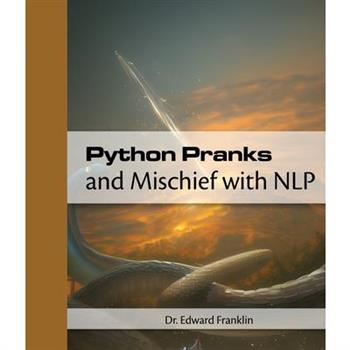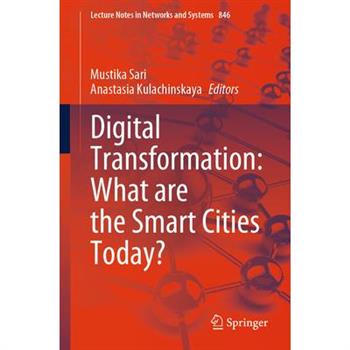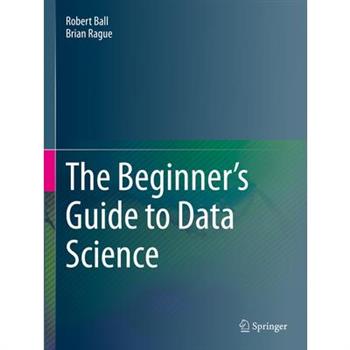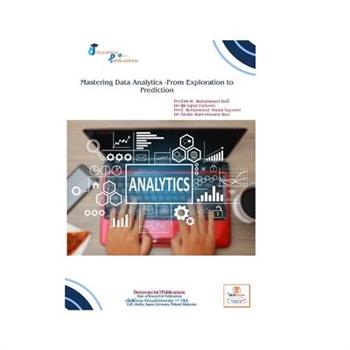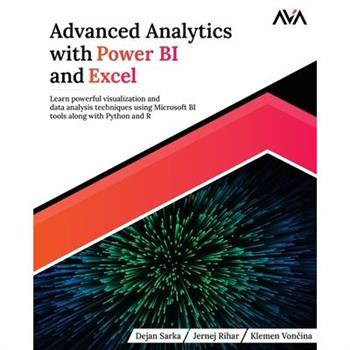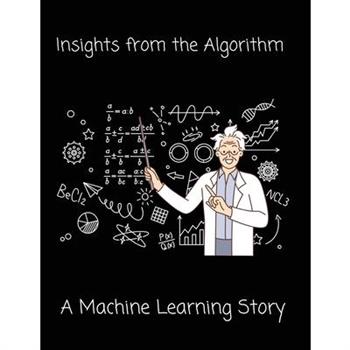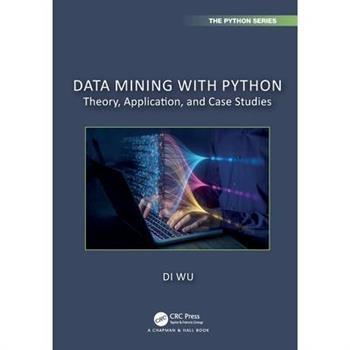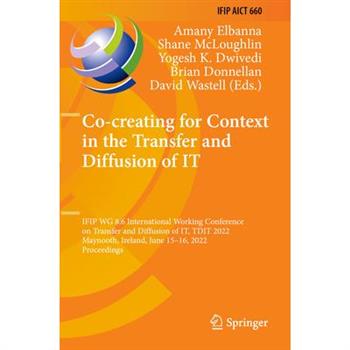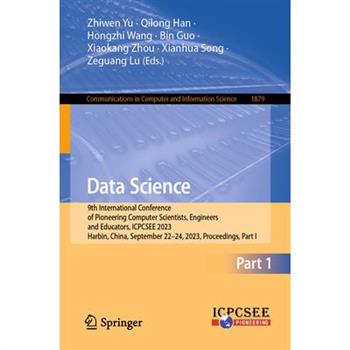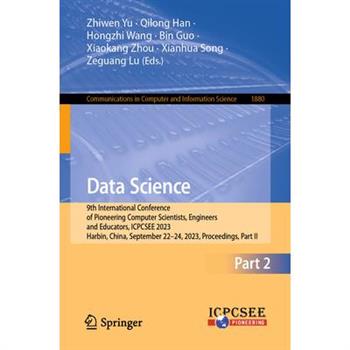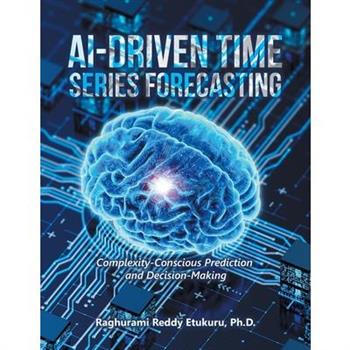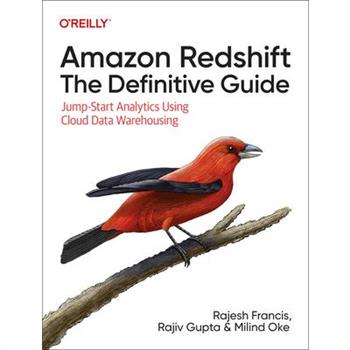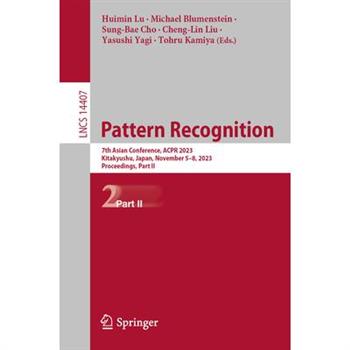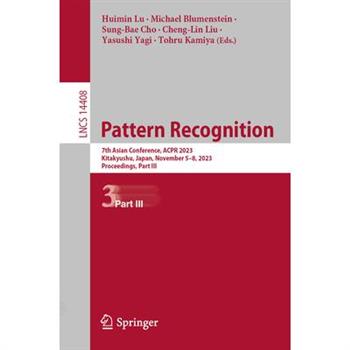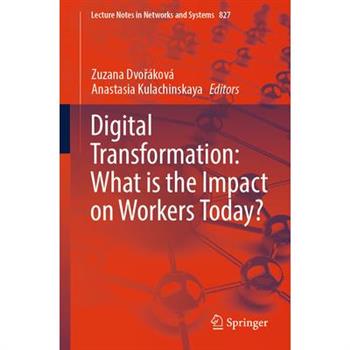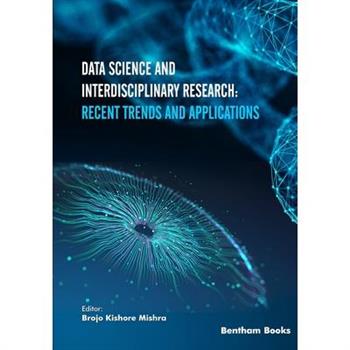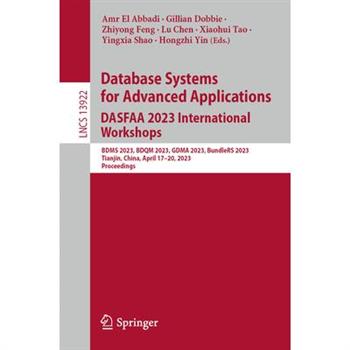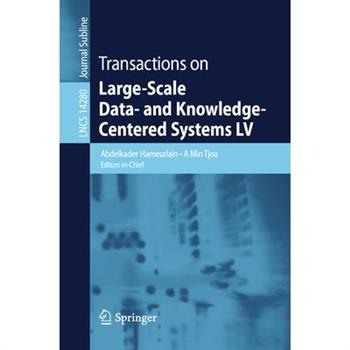The Geographies of Covid-19
This volume of case studies focuses on the geographies of COVID-19 around the world. These geographies are located in both time and space concentrating on both first- and second-order impacts of the COVID-19 pandemic. First-order impacts are those associated with the immediate response to the pandemic that include tracking number of deaths and cases, testing, access to hospitals, impacts on essential workers, searching for the origins of the virus and preventive treatments such as vaccines and contact tracing. Second-order impacts are the result of actions, practices, and policies in response to the spread of the virus, with longer-term effects on food security, access to health services, loss of livelihoods, evictions, and migration. Further, the COVID-19 pandemic will be prolonged due to the onset of variants as well as setting the stage for similar future events. This volume provides a synopsis of how geography and geospatial approaches are used to understand this event andthe emerging "new normal." The volume's approach is necessarily selective due to the global reach of the pandemic and the broad sweep of second-order impacts where important issues may be left out. However, the book is envisioned as the prelude to an extended conversation about adaptation to complex circumstances using geospatial tools.Using case studies and examples of geospatial analyses, this volume adopts a geographic lens to highlight the differences and commonalities across space and time where fundamental inequities are exposed, the governmental response is varied, and outcomes remain uncertain. This moment of global collective experience starkly reveals how inequality is ubiquitous and vulnerable populations - those unable to access basic needs - are increasing. This place-based approach identifies how geospatial analyses and resulting maps depict the pandemic as it ebbs and flows across the globe. Data-driven decision making is needed as we navigate the pandemic and determine ways to address future such events to enable local and regional governments in prioritizing limited resources to mitigate the long-term consequences of COVID-19.
A Geographer's Guide to Computing Fundamentals
This upper-undergraduate textbook teaches students programming in GIS using a mix of computer science theory and hands-on activities, with the aim of empowering students to understand fundamentals and apply their knowledge beyond the specific examples in the book. Each of the book's twenty-one chapters integrates instructional material with exercises in ArcGIS Pro. In doing so, this book combines the strengths of workbooks and theoretical textbooks to provide a holistic and comprehensive text. Each chapter concludes with an unguided task that ensures students have learned the broader principles explained therein. In addition to its unique format, the book covers oft-neglected topics such as debugging, creating a program from scratch, and managing metadata. Section I starts with the principles of scripting and programming with Python. Section II introduces the ArcPy module and elements specific to ArcGIS Pro. This section focuses on data structures, and how they are used andimplemented within Python. Section III uses the topic of algorithms to guide the student through creating tools to add functionality to ArcGIS Pro. The last section, Section IV, builds upon section III to guide the student to developing and sharing projects and Python packages to include external open-source code and share the Python code as an open-source package. This text will prepare students for a long-term ability to do GIS programming, whether in industry or academic research. This comes from the author's observations of students who have learned GIS programming in one platform, such as VBA in ArcMap, struggle to apply that knowledge to a new platform, such as Python in ArcGIS Pro, because the content was presented too closely with a specific platform. The integration of exercises with conceptual content, along with the choice of chapter content, serves this goal of preparing students for working in a dynamic, rapidly changing technology field.
The Semantic Web - Iswc 2023
This book constitutes the proceedings of the 22nd International Semantic Web Conference, ISWC 2023, which took place in October 2023 in Athens, Greece. The 58 full papers presented in this double volume were thoroughly reviewed and selected from 248 submissions. Many submissions focused on the use of reasoning and query answering, witha number addressing engineering, maintenance, and alignment tasks for ontologies. Likewise, there has been a healthy batch of submissions on search, query, integration, and the analysis of knowledge. Finally, following the growing interest in neuro-symbolic approaches, there has been a rise in the number of studies that focus on the use of Large Language Models and Deep Learning techniques such as Graph Neural Networks.
The Semantic Web - Iswc 2023
This book constitutes the proceedings of the 22nd International Semantic Web Conference, ISWC 2023, which took place in October 2023 in Athens, Greece. The 58 full papers presented in this double volume were thoroughly reviewed and selected from 248 submissions. Many submissions focused on the use of reasoning and query answering, witha number addressing engineering, maintenance, and alignment tasks for ontologies. Likewise, there has been a healthy batch of submissions on search, query, integration, and the analysis of knowledge. Finally, following the growing interest in neuro-symbolic approaches, there has been a rise in the number of studies that focus on the use of Large Language Models and Deep Learning techniques such as Graph Neural Networks.
Educating Math Teachers in Social Justice
The widespread availability of big data, machine learning, and computational power has amplified the relevance of data in our day-to-day lives. For example, it is almost impossible to make it through a day without reading the news, scrolling through Facebook, or reading a policyreport that does not generate data or reference or result from data-informed decision-making. As a result, mathematics policy reforms and curriculum developers have begun exploring how data science can be introduced at the K-12 level (e.g., Gould et al. 2016) . At the same time, secondary mathematics teachers have reported feeling uncomfortable with their knowledge about statistics content and practices (Batanero et al., 2011; Franklin et al., 2015). This may be partially attributed to how the statistical education of pre-service mathematics teachers (PSMTs) is often mathematics-oriented (Burill & Biehler, 2011), although mathematics and statistics are two distinct fields. This
Python Pranks and Mischief with NLP
Unleash your mischievous creativity with Python Pranks and Mischief with NLP by Dr. Edward Franklin.This captivating book reveals a treasure trove of pranks powered by Python and natural language processing (NLP) techniques.Whether you're a beginner or an expert coder, this book provides an exhilarating journey through AI-powered sentence generators, language translators, text shufflers, and more.Delve into the art of playful manipulation, blending coding expertise with a splash of humor.Explore a comprehensive range of pranks, from desktop antics to system and network shenanigans, all explained with insightful clarity and accompanied by code examples.Elevate your prankster skills, infusing the power of Python and NLP to create entertainment that leaves everyone laughing.
Practical Machine Learning on Databricks
Take your machine learning skills to the next level by mastering databricks and building robust ML pipeline solutions for future ML innovationsKey Features: Learn to build robust ML pipeline solutions for databricks transitionMaster commonly available features like AutoML and MLflowLeverage data governance and model deployment using MLflow model registryPurchase of the print or Kindle book includes a free PDF eBookBook Description: Unleash the potential of databricks for end-to-end machine learning with this comprehensive guide, tailored for experienced data scientists and developers transitioning from DIY or other cloud platforms. Building on a strong foundation in Python, Practical Machine Learning on Databricks serves as your roadmap from development to production, covering all intermediary steps using the databricks platform.You'll start with an overview of machine learning applications, databricks platform features, and MLflow. Next, you'll dive into data preparation, model selection, and training essentials and discover the power of databricks feature store for precomputing feature tables. You'll also learn to kickstart your projects using databricks AutoML and automate retraining and deployment through databricks workflows.By the end of this book, you'll have mastered MLflow for experiment tracking, collaboration, and advanced use cases like model interpretability and governance. The book is enriched with hands-on example code at every step. While primarily focused on generally available features, the book equips you to easily adapt to future innovations in machine learning, databricks, and MLflow.What You Will Learn: Transition smoothly from DIY setups to databricksMaster AutoML for quick ML experiment setupAutomate model retraining and deploymentLeverage databricks feature store for data prepUse MLflow for effective experiment trackingGain practical insights for scalable ML solutionsFind out how to handle model drifts in production environmentsWho this book is for: This book is for experienced data scientists, engineers, and developers proficient in Python, statistics, and ML lifecycle looking to transition to databricks from DIY clouds. Introductory Spark knowledge is a must to make the most out of this book, however, end-to-end ML workflows will be covered. If you aim to accelerate your machine learning workflows and deploy scalable, robust solutions, this book is an indispensable resource.
Intelligent Transport Systems
This book constitutes the refereed proceedings of the 7th International Conference on Intelligent Transport Systems, INTSYS 2023, held in Molde, Norway, during September 6-7, 2023. With the globalization of trade and transportation and the consequent multi-modal solutions used, additional challenges are faced by organizations and countries. Intelligent Transport Systems make transport safer, more efficient, and more sustainable by applying information and communication technologies to all transportation modes. The 14 full papers included in this book were carefully reviewed and selected from 39 submissions and are organized in three thematic sessions on transportation; smart cities and blockchain; networks.
Digital Transformation: What Are the Smart Cities Today?
This book presents various models and approaches, specific proposals, and recommendations on a whole range of areas for smart cities' development. This book proposes to look at the problem through a broad overview of all elements of a smart city as a single system: smart governance, smart buildings, smart transportation, smart tourism destinations, smart economy, and smart environment. The book is intended for both young and experienced scientists who want to get acquainted with the latest trends and data for using them in their research.
Alteryx Designer Cookbook
Streamline your workflow, transform raw data into actionable insights, and use Alteryx Designer to shape, design, and visualize dataKey FeaturesAcquire the skills necessary to perform analytics operations like an expertDiscover hidden trends and insights in your data from various sources to make accurate predictionsReduce the time and effort required to derive insights from your dataPurchase of the print or Kindle book includes a free eBook in the PDF formatBook DescriptionAlteryx allows you to create data manipulation and analytic workflows with a simple, easy-to-use, code-free UI, and perform fast-executing workflows, offering multiple ways to achieve the same results. The Alteryx Designer Cookbook is a comprehensive guide to maximizing your Alteryx skills and determining the best ways to perform data operations.This book's recipes will guide you through an analyst's complete journey, covering all aspects of the data life cycle. The first set of chapters will teach you how to read data from various sources to obtain reports and pass it through the required adjustment operations for analysis. After an explanation of the Alteryx platform components with a particular focus on Alteryx Designer, you'll be taken on a tour of what and how you can accomplish by using this tool. Along the way, you'll learn best practices and design patterns. The book also covers real-world examples to help you apply your understanding of the features in Alteryx to practical scenarios.By the end of this book, you'll have enhanced your proficiency with Alteryx Designer and an improved ability to execute tasks within the tool efficiently.What you will learnSpeed up the cleansing, data preparing, and shaping processPerform operations and transformations on the data to suit your needsBlend different types of data sources for analysisPivot and un-pivot the data for easy manipulationPerform aggregations and calculations on the dataEncapsulate reusable logic into macrosDevelop high-quality, data-driven reports to improve consistencyWho this book is forThis book is for data analysts, data professionals, and business intelligence professionals seeking to harness the full potential of the tool. A basic understanding of Alteryx Designer and Alteryx terminology, including macros, apps, and workflows, is all you need to get started with this book.Table of ContentsInput data from filesWorking with databasesData Preparation Data Transformations Data Parsing Grouping DataBlending and Merging dataAggregationsDynamic Operations/ ToolsMacros and AppsDownloads, APIs & Web ServicesDeveloper optionsReporting with AlteryxOutputting Data
R Bioinformatics Cookbook - Second Edition
Discover over 80 recipes for modeling and handling real-life biological data using modern libraries from the R ecosystemKey Features: Apply modern R packages to process biological data using real-world examplesRepresent biological data with advanced visualizations and workflows suitable for research and publicationsSolve real-world bioinformatics problems such as transcriptomics, genomics, and phylogeneticsPurchase of the print or Kindle book includes a free PDF eBookBook Description: The updated second edition of R Bioinformatics Cookbook takes a recipe-based approach to show you how to conduct practical research and analysis in computational biology with R. You'll learn how to create a useful and modular R working environment, along with loading, cleaning, and analyzing data using the most up-to-date Bioconductor, ggplot2, and tidyverse tools.This book will walk you through the Bioconductor tools necessary for you to understand and carry out protocols in RNA-seq and ChIP-seq, phylogenetics, genomics, gene search, gene annotation, statistical analysis, and sequence analysis. As you advance, you'll find out how to use Quarto to create data-rich reports, presentations, and websites, as well as get a clear understanding of how machine learning techniques can be applied in the bioinformatics domain. The concluding chapters will help you develop proficiency in key skills, such as gene annotation analysis and functional programming in purrr and base R. Finally, you'll discover how to use the latest AI tools, including ChatGPT, to generate, edit, and understand R code and draft workflows for complex analyses.By the end of this book, you'll have gained a solid understanding of the skills and techniques needed to become a bioinformatics specialist and efficiently work with large and complex bioinformatics datasets.What You Will Learn: Set up a working environment for bioinformatics analysis with RImport, clean, and organize bioinformatics data using tidyrCreate publication-quality plots, reports, and presentations using ggplot2 and QuartoAnalyze RNA-seq, ChIP-seq, genomics, and next-generation genetics with BioconductorSearch for genes and proteins by performing phylogenetics and gene annotationApply ML techniques to bioinformatics data using mlr3Streamline programmatic work using iterators and functional tools in the base R and purrr packagesUse ChatGPT to create, annotate, and debug code and workflowsWho this book is for: This book is for bioinformaticians, data analysts, researchers, and R developers who want to address intermediate-to-advanced biological and bioinformatics problems by learning via a recipe-based approach. Working knowledge of the R programming language and basic knowledge of bioinformatics are prerequisites.
The Beginner's Guide to Data Science
This book discusses the principles and practical applications of data science, addressing key topics including data wrangling, statistics, machine learning, data visualization, natural language processing and time series analysis. Detailed investigations of techniques used in the implementation of recommendation engines and the proper selection of metrics for distance-based analysis are also covered.Utilizing numerous comprehensive code examples, figures, and tables to help clarify and illuminate essential data science topics, the authors provide an extensive treatment and analysis of real-world questions, focusing especially on the task of determining and assessing answers to these questions as expeditiously and precisely as possible. This book addresses the challenges related to uncovering the actionable insights in "big data," leveraging database and data collection tools such as web scraping and text identification.This book is organized as 11 chapters, structuredas independent treatments of the following crucial data science topics: Data gathering and acquisition techniques including data creationManaging, transforming, and organizing data to ultimately package the information into an accessible format ready for analysisFundamentals of descriptive statistics intended to summarize and aggregate data into a few concise but meaningful measurementsInferential statistics that allow us to infer (or generalize) trends about the larger population based only on the sample portion collected and recordedMetrics that measure some quantity such as distance, similarity, or error and which are especially useful when comparing one or more data observationsRecommendation engines representing a set of algorithms designed to predict (or recommend) a particular product, service, or other item of interest a user or customer wishes to buy or utilize in some mannerMachine learning implementations and associated algorithms, comprising core data science technologies with many practical applications, especially predictive analyticsNatural Language Processing, which expedites the parsing and comprehension of written and spoken language in an effective and accurate mannerTime series analysis, techniques to examine and generate forecasts about the progress and evolution of data over timeData science provides the methodology and tools to accurately interpret an increasing volume of incoming information in order to discern patterns, evaluate trends, and make the right decisions. The results of data science analysis provide real world answers to real world questions. Professionals working on data science and business intelligence projects as well as advanced-level students and researchers focused on data science, computer science, business and mathematics programs will benefit from this book.
Mastering Data Analytics -From Exploration to Prediction Prof.Dr.K .Mahammad Rafi
"The thorough manual "Mastering Data Analytics: From Exploration to Prediction" takes readers on a tour of the intriguing realm of data analytics. This book provides readers with the fundamental information and abilities required to harness the power of data for reasoned decision-making, whether they are novices or seasoned data aficionados.The book starts with the basics before introducing readers to important ideas in data analysis, statistical methods, and data visualization. After that, it gets into more complex subjects like machine learning and predictive modeling, offering detailed instructions on how to create and use predictive models.Throughout the book, real-world uses of data analytics in a variety of industries-from business and finance to healthcare and marketing-are illustrated with concrete examples and case studies. Readers will gain knowledge on how to examine and clean data, glean insightful conclusions, and develop forecasts based on data that lead to success.In order to assist readers become skilled in data analysis, "Mastering Data Analytics" stresses a hands-on approach and provides advice, tools, and best practices. This book is your indispensable companion for mastering the art of data analytics, whether you are a data newbie hoping to break into the profession or an experienced analyst looking to improve your skills.
Machine Learning with Qlik Sense
Master the art of machine learning by using the one-of-a-kind Qlik platform, and take your data analytics skills to the next levelKey Features: Gain a solid understanding of machine learning concepts and learn to effectively define a problemExplore the application of machine learning principles within the Qlik platformApply your knowledge of ML to real-world scenarios with the help of practical examplesPurchase of the print or Kindle book includes a free PDF eBookBook Description: The ability to forecast future trends through data prediction, coupled with the integration of ML and AI, has become indispensable to global enterprises. Qlik, with its extensive machine learning capabilities, stands out as a leading analytics platform enabling businesses to achieve exhaustive comprehension of their data. This book helps you maximize these capabilities by using hands-on illustrations to improve your ability to make data-driven decisions.You'll begin by cultivating an understanding of machine learning concepts and algorithms, and build a foundation that paves the way for subsequent chapters. The book then helps you navigate through the process of framing machine learning challenges and validating model performance. Through the lens of Qlik Sense, you'll explore data preprocessing and analysis techniques, as well as find out how to translate these techniques into pragmatic machine learning solutions. The concluding chapters will help you get to grips with advanced data visualization methods to facilitate a clearer presentation of findings, complemented by an array of real-world instances to bolster your skillset.By the end of this book, you'll have mastered the art of machine learning using Qlik tools and be able to take your data analytics journey to new heights.What You Will Learn: Find out how to build practical machine learning solutions with the Qlik platformDevelop the skills needed to generate and verify machine learning models using the Qlik platformDiscover techniques used for preparing and investigating data to craft machine learning solutionsUnderstand how to transform real-world business problems into machine learning modelsExpand your potential to new use cases with data analyticsExplore advanced visualization techniques to make your models come aliveWho this book is for: If you're interested in data and analytics and are looking to extend your skillset to machine learning, this book is for you. Basic working knowledge of data, preferably with Qlik tools, will help you get started with this book. This is an excellent guide for anyone who wants to start using machine learning as part of their data analytics journey.
Advanced Analytics with Power BI and Excel
Empowering You to Master Business Intelligence and Solve Real-world Analytical Problems.DESCRIPTIONIn today's analytics landscape, proficiency in Excel and Power BI is practically a prerequisite for a successful career. This book provides a concise yet comprehensive exploration of these foundational elements of modern Business Intelligence (BI).Comprising ten chapters, this book covers the entire development journey of a Power BI analytical solution, spanning from data modeling and preparation to report creation, publication, and dashboard and app deployment. It offers insights into security measures and performance optimization, ensuring a well-rounded understanding of the BI ecosystem. Furthermore, it delves into advanced topics, such as leveraging data science algorithms within reports, offering readers an extensive learning experience. The book takes a holistic approach to these technologies, offering a contrast to the narrow perspectives often adopted by contemporary BI professionals who rely solely on a single tool or language. The book allows data enrichment through calculations that can be achieved using various languages, including SQL queries at the source, Power Query Formula Language, M, Python, R, and DAX. By the end of this book you will master these options but be able to also weigh their pros and cons to make informed decisions.TABLE OF CONTENTS 1. Introducing the Theoretical Background for Democratizing Analytics2. Acquiring and transforming data from multiple sources3. Power Query Transformations and Formula Language (M) Overview4. Building a simple analytical solution with Power Pivot in Excel5. Enhancing the model and business analysis with DAX6. Creating reports in Power BI Desktop7. Using the Power BI Service8. Data Science in Power BI 9. Optimizing Power BI models and reports10. Deploying, Maintaining and Securing Power BI Assets Index
Insights from the Algorithm
"Insights from the Algorithm: A Machine Learning Story" is an engaging and informative journey into the fascinating world of machine learning and artificial intelligence. This narrative weaves together a rich tapestry of concepts, techniques, and practical applications, offering a comprehensive understanding of this rapidly evolving field.This compelling narrative takes readers on a captivating exploration of the inner workings of algorithms, data analytics, and predictive modeling. It delves deep into the ever-expanding universe of machine learning, offering insights into its foundational principles, methodologies, and real-world applications.Throughout the pages of this book, you'll embark on a quest to unravel the secrets behind the algorithms that power recommendation systems, autonomous vehicles, and natural language processing. You'll discover how machine learning algorithms are designed to detect intricate patterns within data, enabling them to make predictions and take intelligent actions.With a keen focus on demystifying complex technical concepts, "Insights from the Algorithm" serves as a beacon for both beginners and seasoned data scientists. It elucidates key topics such as supervised and unsupervised learning, deep learning, neural networks, and the ethics of AI in an accessible and engaging manner.The narrative goes beyond mere technicalities and offers a thought-provoking exploration of the societal and ethical implications of machine learning. It discusses the responsible use of AI and the impact of algorithms on decision-making, privacy, and bias, providing a comprehensive understanding of the challenges and opportunities presented by this revolutionary technology.In "Insights from the Algorithm," you'll find a treasure trove of case studies and real-world examples that illustrate the transformative power of machine learning. From healthcare and finance to marketing and autonomous robotics, this narrative highlights how machine learning is reshaping industries and offering innovative solutions to complex problems.Join us on this captivating journey as we unveil the intricate world of machine learning and discover how algorithms are not just lines of code but powerful tools that unlock new dimensions of understanding and enable intelligent actions. This book is your gateway to the future, where data-driven insights and algorithmic intelligence redefine what's possible. Whether you're an enthusiast, a student, or a professional in the field, this narrative offers a comprehensive, accessible, and inspiring guide to the incredible world of machine learning.
Speech Recognition Systems for Man Machine Interaction
The fundamental mode of communication among humans is speech and in the case of machine-human interface; verbal language has been believed as the natural method. When communication with machines is carried out, it is very difficult and slow-moving in magnitude when realized via keyboards, mouses and other devices. Thus, speech feed-in is an important constituent to making this communication easily accessible. Also, humans see speech as a great source of information. Therefore, persons who are not literate or have vague about computers can easily access computers by employing speech instructions. Even people with some physical disability who are not able to type or click with their hands can use their speech to operate the computer. Even people who are proficient in operating computers can speed up data entry, sending emails and other documents using the speech input methods. Furthermore, this mode of operation possesses many advantages. For example, while driving, the hands of the driver are busy steering the driving wheel and he cannot type on his mobile. In such a case speech is a good input option. GPS (Global Positioning System) is an example of a speech-based system being used. Another example is speech-enabled dialing, where the user can just ask the device to call a particular person, without dialing his number.The common and efficient means of communication among humans is through 'speech'. To process speech means to extract useful information from it, processing includes the implementation of electric signals on the acoustic pressure waves collected from human vocalization and applying mathematical analysis to it. The field of processing speech involves the natural operation of analysing speech, coding, augmentation, synthesis, and recognition. Analysis of speech is the study of its creation mechanism to make a mathematical model of physical phenomena. Speech coding aims to keep information about specific speech parameters for later retrieval. The method of refining precision and quality of speech which is noisy utilises various algorithms is recognized as speech enhancement [2]. Producing artificial human speech using coded information is known as the synthesis of speech. The method of inverse synthesis is the capability of a program or machine to classify the linguistic contents mixed up in the speech signal.
Knowledge and Systems Sciences
This book constitutes the proceedings of the 22nd International Symposium, KSS 2023, held in Guangzhou, China, during December 2-3, 2023. The 20 full papers included in this volume were carefully reviewed and selected from 56 submissions. The volume is divided in topical sections that cover the following topics: data mining and machine learning, complex systems modeling, decision analysis and knowledge management, opinion mining and knowledge technologies.
Service-Oriented Computing
These two volumes constitute the proceedings of the 21st International Conference, ICSOC 2023, held Rome, Italy, during November 28-December 1, 2023.The 35 full papers and the 10 short papers included in this volume were carefully reviewed and selected from 208 submissions. The volumes focus on cutting-edge topics like artificial intelligence, machine learning, big data analytics, the Internet of Things (IoT), and emerging technologies such as quantum computing, blockchain, chatbots, and sustainable green IT solutions.
Service-Oriented Computing
These two volumes constitute the proceedings of the 21st International Conference, ICSOC 2023, held Rome, Italy, during November 28-December 1, 2023.The 35 full papers and the 10 short papers included in this volume were carefully reviewed and selected from 208 submissions. The volumes focus on cutting-edge topics like artificial intelligence, machine learning, big data analytics, the Internet of Things (IoT), and emerging technologies such as quantum computing, blockchain, chatbots, and sustainable green IT solutions.
Advances in Mobile Computing and Multimedia Intelligence
This book constitutes the refereed proceedings of the 21st International Conference on Advances in Mobile Computing and Multimedia Intelligence, MoMM2023, organized in conjunction with the 25th International Conference on Information Integration and Web Intelligence, iiWAS 2023, held in Denpasar, Bali, Indonesia, during December 4-6, 2023.The 10 full papers and 5 short papers presented in this book were carefully reviewed and selected from 37 submissions. The papers are divided into the following topical sections: security in mobile environments; mobile computing and wireless sensors; and image and video processing.
Information Integration and Web Intelligence
This book constitutes the refereed conference proceedings of the 25th International Conference on Information Integration and Web Intelligence, iiWAS 2023, organized in conjunction with the 21st International Conference on Advances in Mobile Computing and Multimedia Intelligence, MoMM2023, held in Denpasar, Bali, Indonesia, during December 4-6, 2023.The 24 full papers and 24 short papers presented in this book were carefully reviewed and selected from 96 submissions. The papers are divided into the following topical sections: business data and applications; data management; deep and machine Learning; generative AI; image data and knowledge graph; recommendation systems; similarity measure and metric; and topic and text matching.
Data Mining with Python
Data is everywhere and it's growing at an unprecedented rate. But making sense of all that data is a challenge. Data Mining is the process of discovering patterns and knowledge from large data sets, and Data Mining with Python focuses on the hands-on approach to learning Data Mining. It showcases how to use Python Packages to fulfill the Data Mining pipeline, which is to collect, integrate, manipulate, clean, process, organize, and analyze data for knowledge.The contents are organized based on the Data Mining pipeline, so readers can naturally progress step by step through the process. Topics, methods, and tools are explained in three aspects: "What it is" as a theoretical background, "why we need it" as an application orientation, and "how we do it" as a case study.This book is designed to give students, data scientists, and business analysts an understanding of Data Mining concepts in an applicable way. Through interactive tutorials that can be run, modified, and used for a more comprehensive learning experience, this book will help its readers to gain practical skills to implement Data Mining techniques in their work.
Big Data Concepts, Technologies, and Applications
With the advent of such advanced technologies as cloud computing, the Internet of Things, the Medical Internet of Things, the Industry Internet of Things and sensor networks as well as the exponential growth in the usage of Internet-based and social media platforms, there are enormous oceans of data. These huge volumes of data can be used for effective decision making and improved performance if analyzed properly. Due to its inherent characteristics, big data is very complex and cannot be handled and processed by traditional database management approaches. There is a need for sophisticated approaches, tools and technologies that can be used to store, manage and analyze these enormous amounts of data to make the best use of them.Big Data Concepts, Technologies, and Applications covers the concepts, technologies, and applications of big data analytics. Presenting the state-of-the-art technologies in use for big data analytics. it provides an in-depth discussion about the important sectors where big data analytics has proven to be very effective in improving performance and helping industries to remain competitive. This book provides insight into the novel areas of big data analytics and the research directions for the scholars working in the domain. Highlights include: The advantages, disadvantages and challenges of big data analytics State-of-the-art technologies for big data analytics such as Hadoop, NoSQL databases, data lakes, deep learning and blockchain The application of big data analytic in healthcare, business, social media analytics, fraud detection and prevention and governance Exploring the concepts and technologies behind big data analytics, the book is an ideal resource for researchers, students, data scientists, data analysts and business analysts who need insight into big data analytics
Big Data Concepts, Technologies, and Applications
With the advent of such advanced technologies as cloud computing, the Internet of Things, the Medical Internet of Things, the Industry Internet of Things and sensor networks as well as the exponential growth in the usage of Internet-based and social media platforms, there are enormous oceans of data. These huge volumes of data can be used for effective decision making and improved performance if analyzed properly. Due to its inherent characteristics, big data is very complex and cannot be handled and processed by traditional database management approaches. There is a need for sophisticated approaches, tools and technologies that can be used to store, manage and analyze these enormous amounts of data to make the best use of them.Big Data Concepts, Technologies, and Applications covers the concepts, technologies, and applications of big data analytics. Presenting the state-of-the-art technologies in use for big data analytics. it provides an in-depth discussion about the important sectors where big data analytics has proven to be very effective in improving performance and helping industries to remain competitive. This book provides insight into the novel areas of big data analytics and the research directions for the scholars working in the domain. Highlights include: The advantages, disadvantages and challenges of big data analytics State-of-the-art technologies for big data analytics such as Hadoop, NoSQL databases, data lakes, deep learning and blockchain The application of big data analytic in healthcare, business, social media analytics, fraud detection and prevention and governance Exploring the concepts and technologies behind big data analytics, the book is an ideal resource for researchers, students, data scientists, data analysts and business analysts who need insight into big data analytics
Coal or Gold
With disparate data streaming from all directions into the enterprise's Data Warehouse and its Business Intelligence (BI) reporting, can the Data Interpreter answer with clarity, conviction, and metric assurance the Decision Maker's three key questions: How reliable are the sources for this report? How accurate is the underlying data? Can I bet the business on it? Coal or Gold provides a mechanism for capturing and validating the reliability of the sources and the accuracy of information in every Business Intelligence product.
Databases Theory and Applications
This book constitutes the refereed proceedings of the 34th Australasian Database Conference on Databases Theory and Applications, ADC 2023, held in Melbourne, VIC, Australia, during November 1-3, 2023. The 26 full papers presented in this volume are carefully reviewed and selected from 41 submissions. They were organized in topical sections named: Mining Complex Types of Data, Natural Language Processing and Text Analysis, Machine Learning and Computer Vision, Database Systems and Data Storage, Data Quality and Fairness for Graphs and Graph Mining and Graph Algorithms.
Graphonomics in Human Body Movement. Bridging Research and Practice from Motor Control to Handwriting Analysis and Recognition
This book constitutes the refereed proceedings of the 21st International Conference of the International Graphonomics Society on Graphonomics in Human Body Movement, IGS 2023, held in ?vora, Portugal, during October 16-19, 2023.The 12 full papers presented in this book together with one short paper and two invited papers were carefully reviewed and selected from 23 submissions. The conference centers around graphonomics research aimed at comprehending the processes of handwriting acquisition and execution. Moreover, it delves deeper into the impact of the writer's neural, psychological, and biomechanical conditions on the various aspects of handwriting
Enterprise Architecture and Cartography
This textbook provides guidance to both students and practitioners of enterprise architecture (EA) on how to develop and maintain enterprise models. Rather than providing yet another list of EA notations and frameworks from A to Z, it focuses on methods to perform such tasks. The problem of EA maintenance, named Enterprise Cartography, is an important aspect addressed in this book because EA is a never ending challenge that increases as the organization transformations pace also increases. The long time perspective also entails the evolution of architectural frameworks and notations, something that does not occur when developing new models. Thus, a catalogue of patterns, principles and methods is presented to develop and maintain EA models and views. After a general introduction to the book in chapter 1, chapter 2 presents basic concepts for EA modeling. Chapter 3 further details the set of EA concepts needed to present the patterns, and principles, which are subsequently introduced in chapter 4. Next, chapter 5 describes enterprise cartography concepts and principles. The remaining book then turns to techniques and methodologies. In chapter 6 an EA development method is summarized. In chapter 7 an enterprise strategy design approach is proposed, while in chapter 8 a business process design methodology is described. Chapters 9 and 10 focus on information architecture and information systems architecture design approaches, including information systems architecture planning and application portfolio management. Eventually, chapter 11 describes a method for enterprise cartography (EC) design. Last not least, several case studies on EA and EC are proposed in the last chapter.
Geographical Information Systems Theory, Applications and Management
This book constitutes selected, revised and extended papers of the 7th International Conference on Geographical Information Systems Theory, Applications and Management, GISTAM 2021, held in April 2021, and 8th International Conference on Geographical Information Systems Theory, Applications and Management, GISTAM 2022, held in April 2022. Due to the COVID-19 pandemic both conferences were held online. The 4 revised full papers presented at GISTAM 2021 were carefully reviewed and selected from the 44 submissions, and 3 papers presented at GISTAM 2022 were selected from the 27 submissions. The papers are centered on urban and regional planning; water information systems; geospatial information and technologies; spatio-temporal database management; decision support systems; energy information systems; GPS and location detection.
Co-Creating for Context in the Transfer and Diffusion of It
This volume, IFIP AICT 660, constitutes the refereed proceedings of the IFIP WG 8.6 International Working Conference "Co-creating for Context in Prospective Transfer and Diffusion of IT" on Transfer and Diffusion of IT, TDIT 2022, held in Maynooth, Ireland, during June 15-16, 2022.The 19 full papers and 10 short papers presented were carefully reviewed and selected from 60 submissions. The papers focus on the re-imagination of diffusion and adoption of emerging technologies. They are organized in the following parts:
Data Science
This two-volume set (CCIS 1879 and 1880) constitutes the refereed proceedings of the 9th International Conference of Pioneering Computer Scientists, Engineers and Educators, ICPCSEE 2023 held in Harbin, China, during September 22-24, 2023. The 52 full papers and 14 short papers presented in these two volumes were carefully reviewed and selected from 244 submissions. The papers are organized in the following topical sections: Part I: Applications of Data Science, Big Data Management and Applications, Big Data Mining and Knowledge Management, Data Visualization, Data-driven Security, Infrastructure for Data Science, Machine Learning for Data Science and Multimedia Data Management and Analysis.Part II: Data-driven Healthcare, Data-driven Smart City/Planet, Social Media and Recommendation Systems and Education using big data, intelligent computing or data mining, etc.
Data Science
This two-volume set (CCIS 1879 and 1880) constitutes the refereed proceedings of the 9th International Conference of Pioneering Computer Scientists, Engineers and Educators, ICPCSEE 2023 held in Harbin, China, during September 22-24, 2023.The 52 full papers and 14 short papers presented in these two volumes were carefully reviewed and selected from 244 submissions. The papers are organized in the following topical sections: Part I: Applications of Data Science, Big Data Management and Applications, Big Data Mining and Knowledge Management, Data Visualization, Data-driven Security, Infrastructure for Data Science, Machine Learning for Data Science and Multimedia Data Management and Analysis.Part II: Data-driven Healthcare, Data-driven Smart City/Planet, Social Media and Recommendation Systems and Education using big data, intelligent computing or data mining, etc.
AI-Driven Time Series Forecasting
When you enter the world of time series analysis, you step into a labyrinth of numerical patterns, where each turn you take unveils another layer of complexity. Here, simple mathematical or statistical models struggle to keep pace. Reality is riddled with complex patterns in time series data, which, like cryptic pieces of a jigsaw puzzle, hold the key to unraveling insightful predictions. These complex patterns include non-linearity, non-stationarity, long memory or dependence, asymmetry, and stochasticity. But what creates these intricate patterns? Raghurami Reddy Etukuru, Ph.D., a distinguished and adaptable specialist in data science and artificial intelligence, delves into that question in this groundbreaking book, explaining that the factors are numerous and multifaceted, each adding their own measure of challenge. He doesn't just discuss problems but also addresses the forecasting of time series amidst intricate patterns. Take a deep dive deep into the world of numbers and patterns, so you can unravel complexities and leverage the power of artificial intelligence to enhance predictive capabilities. More than just a theoretical guide, this book is a practical companion in the often-turbulent journey of understanding and predicting complex time series data.
Technology in Healthcare
Healthcare systems around the world are grappling with several major challenges such as the growing prevalence of chronic diseases, rising healthcare costs, and a shortage of healthcare workers. Without action, the Organisation for Economic Co-operation and Development has estimated that the average public spending on healthcare costs will increase to 10% of GDP. The shortage of healthcare workers has been a long-standing issue in Europe, even before the COVID-19 pandemic. According to a 2018 report by the European Commission's Joint Research Centre, there was a shortage of over 1 million healthcare workers across the European Union. Such shortages have resulted in longer waiting times for patients, increased workload and stress for healthcare workers, and lower quality of care for patients. The pandemic has further underscored the importance of addressing this issue and ensuring that healthcare systems have adequate capacity to meet the needs of patients, both now and in the future.It is clear that the healthcare sector needs to undergo radical changes to ensure that future generations have easy access to quality care that is also affordable. One way to achieve this is by leveraging the increasing use of digitization in the sector. According to a 2019 report by the European Commission, the volume of healthcare data in the EU could reach 2.8 zettabytes by 2020, with an annual growth rate of 36%. The question then is, how can we leverage the insights that lie within this vast amount of data to transform the healthcare sector and address its most pressing issues, namely cost, quality, and accessibility of care.This book captures the learnings from the BigMedilytics project, funded by the EC from 2018 to 2021. The project aimed to transform Europe's healthcare sector by using state-of-the-art Big Data technologies to achieve breakthrough productivity in the sector by reducing cost, improving patient outcomes, and delivering better access to healthcare facilities, covering the entire Healthcare Continuum. The project executed 12 real-life, in-hospital, big data pilots across three different themes: (i) Population health and chronic disease management, (ii) Oncology, and (iii) Industrialization of healthcare. The pilots spanned 8 European countries, the health data of 11 million patients, involved 35 consortium partners, and incorporated diverse data sets originating from the public health sector, insurance companies, IoT devices, pharmaceutical industry, and public data sets.
Amazon Redshift: The Definitive Guide
Amazon Redshift powers analytic cloud data warehouses worldwide, from startups to some of the largest enterprise data warehouses available today. This practical guide thoroughly examines this managed service and demonstrates how you can use it to extract value from your data immediately, rather than go through the heavy lifting required to run a typical data warehouse. Analytic specialists Rajesh Francis, Rajiv Gupta, and Milind Oke detail Amazon Redshift's underlying mechanisms and options to help you explore out-of-the box automation. Whether you're a data engineer who wants to learn the art of the possible or a DBA looking to take advantage of machine learning-based auto-tuning, this book helps you get the most value from Amazon Redshift. By understanding Amazon Redshift features, you'll achieve excellent analytic performance at the best price, with the least effort. This book helps you: Build a cloud data strategy around Amazon Redshift as foundational data warehouse Get started with Amazon Redshift with simple-to-use data models and design best practices Understand how and when to use Redshift Serverless and Redshift provisioned clusters Take advantage of auto-tuning options inherent in Amazon Redshift and understand manual tuning options Transform your data platform for predictive analytics using Redshift ML and break silos using data sharing Learn best practices for security, monitoring, resilience, and disaster recovery Leverage Amazon Redshift integration with other AWS services to unlock additional value
Research Software Engineering
Research Software Engineering: A Guide to the Open Source Ecosystem strives to give a big-picture overview and an understanding of the opportunities of programming as an approach to analytics and statistics. The book argues that a solid "programming" skill level is not only well within reach for many but also worth pursuing for researchers and business analysts. The ability to write a program leverages field-specific expertise and fosters interdisciplinary collaboration as source code continues to become an important communication channel. Given the pace of the development in data science, many senior researchers and mentors, alongside non-computer science curricula lack a basic software engineering component. This book fills the gap by providing a dedicated programming-with-data resource to both academic scholars and practitioners.Key Features overview: breakdown of complex data science software stacks into core components applied: source code of figures, tables and examples available and reproducible solely with license cost-free, open source software reader guidance: different entry points and rich references to deepen the understanding of selected aspects
Pattern Recognition
This three-volume set LNCS 14406-14408 constitutes the refereed proceedings of the 7th Asian Conference on Pattern Recognition, ACPR 2023, held in Kitakyushu, Japan, in November 2023. The 93 full papers presented were carefully reviewed and selected from 164 submissions. The conference focuses on four important areas of pattern recognition: pattern recognition and machine learning, computer vision and robot vision, signal processing, and media processing and interaction, covering various technical aspects.
Machine Translation
This book constitutes the refereed proceedings of the 19th China Conference on Machine Translation, CCMT 2023, held in Jinan, China, during October 19-21, 2023. The 8 full papers and 3 short papers included in this book were carefully reviewed and selected from 71 submissions. They focus on machine translation; improvement of translation models and systems; translation quality estimation; document-level machine translation; low-resource machine translation.
Pattern Recognition
This three-volume set LNCS 14406-14408 constitutes the refereed proceedings of the 7th Asian Conference on Pattern Recognition, ACPR 2023, held in Kitakyushu, Japan, in November 2023. The 93 full papers presented were carefully reviewed and selected from 164 submissions. The conference focuses on four important areas of pattern recognition: pattern recognition and machine learning, computer vision and robot vision, signal processing, and media processing and interaction, covering various technical aspects.
Digital Transformation: What Is the Impact on Workers Today?
This book offers the latest research on formation of modern workers in the context of digitalization: from constant improvement of new training technologies to growing requirements for employees in workplace, as well as an assessment of specialists' digital skills and dynamics of changes over the past years. The book proposes to look at the pool of these problems through the prism of acquisition of new digital competencies and requirements for a modern worker. This book is intended for both young and experienced scientists who want to get acquainted with latest trends and data to use them in their research.
Data Science and Interdisciplinary Research
Data Science and Interdisciplinary Research: Recent Trends and Applications is a compelling edited volume that offers a comprehensive exploration of the latest advancements in data science and interdisciplinary research. Through a collection of 10 insightful chapters, this book showcases diverse models of machine learning, communications, signal processing, and data analysis, illustrating their relevance in various fields. Key Themes: -Advanced Rainfall Prediction: Presents a machine learning model designed to tackle the challenging task of predicting rainfall across multiple countries, showcasing its potential to enhance weather forecasting.-Efficient Cloud Data Clustering: Explains a novel computational approach for clustering large-scale cloud data, addressing the scalability of cloud computing and data analysis.-Secure In-Vehicle Communication: Explores the critical topic of secure communication in in-vehicle networks, emphasizing message authentication and data integrity.-Smart Irrigation 4.0: Details a decision model designed for smart irrigation, integrating agricultural sensor data reliability analysis to optimize water usage in precision agriculture.-Smart Electricity Monitoring: Highlights machine learning-based smart electricity monitoring and fault detection systems, contributing to the development of smart cities.-Enhanced Learning Environments: Investigates the effectiveness of mobile learning in higher education, shedding light on the role of technology in shaping modern learning environments.-Coastal Socio-Economy Study: Presents a case study on the socio-economic conditions of coastal fishing communities, offering insights into the livelihoods and challenges they face.-Signal Noise Removal: Shows filtering techniques for removing noise from ECG signals, enhancing the accuracy of medical data analysis and diagnosis.-Deep Learning in Biomedical Research: Explores deep learning techniques for biomedical research, particularly in the realm of gene identification using Next Generation Sequencing (NGS) data.-Medical Diagnosis through Machine Learning: Concludes with a chapter on breast cancer detection using machine learning concepts, demonstrating the potential of AI-driven diagnostics.
Computational Intelligence in Data Science
This book constitutes the refereed post-conference proceedings of the Fifth IFIP TC 12 International Conference on Computational Intelligence in Data Science, ICCIDS 2022, held virtually, in March 2022. The 28 revised full papers presented were carefully reviewed and selected from 96 submissions. The papers cover topics such as computational intelligence for text analysis; computational intelligence for image and video analysis; blockchain and data science.
Database Systems for Advanced Applications. Dasfaa 2023 International Workshops
This volume constitutes the papers of several workshops which were held in conjunction with the 28th International Conference on Database Systems for Advanced Applications, DASFAA 2023, held in Tanjin, China, in April 2023. The 23 revised full papers presented in this book were carefully reviewed and selected from 40 submissions. DASFAA 2023 presents the following four workshops: 9th International Workshop on Big Data Management and Service (BDMS 2023), 8th International Workshop on Big Data Quality Management (BDQM 2023); 7th International Workshop on Graph Data Management and Analysis (GDMA 2023); 1st International Workshop on Bundle-based Recommendation Systems (BundleRS 2023).
Algebraic Approach to Data Processing
The book explores a new general approach to selecting-and designing-data processing techniques. Symmetry and invariance ideas behind this algebraic approach have been successful in physics, where many new theories are formulated in symmetry terms. The book explains this approach and expands it to new application areas ranging from engineering, medicine, education to social sciences. In many cases, this approach leads to optimal techniques and optimal solutions. That the same data processing techniques help us better analyze wooden structures, lung dysfunctions, and deep learning algorithms is a good indication that these techniques can be used in many other applications as well. The book is recommended to researchers and practitioners who need to select a data processing technique-or who want to design a new technique when the existing techniques do not work. It is also recommended to students who want to learn the state-of-the-art data processing.









